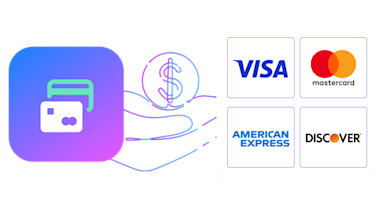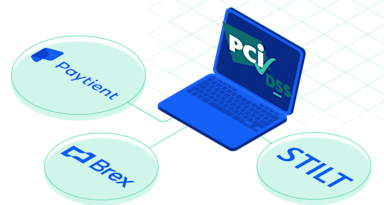The basics of card programs as well as how to solve the biggest challenges with the least amount of work, risk, and cost.
Virtual and debit are an essential part of every card program. From complex pricing and risk management to ensuring easy integration into your existing payment infrastructure, there’s a lot to get right when issuing cards.
If you’re not issuing cards, you’re not meeting consumer expectations.
Debit cards are the most commonly used and most preferred payment method in the United States, after surpassing cash in recent years, according to the Federal Reserve’s Diary of Consumer Payment Choice Study.
There are several paths you can take to issue cards. You can print physical cards or stick to virtual; you can get your own BIN or share one; you can invest more or less in card design. The approach you take will determine how much issuing cards costs you, and how long it takes.
In this webinar, banking as a service (BaaS) provider Treasury Prime and data security compliance firm Very Good Security (VGS) share their combined expertise. Hear from VGS VP of Business Development and Strategy Peter Berg; Treasury Prime Card Product Manager Marina Nelson, and Treasury Prime VP of Strategy and Business Development Mark Vermeersch.
Here are some highlights from the discussion
Know why you’re launching the card
Treasury Prime’s Mark Vermeersch says it’s important for fintechs to know exactly what they are looking to get out of offering a card. Is it the main product you are offering customers? Or is it a feature? Depending on your response, you may ultimately want to launch physical and/or digital cards. But launching these cards can be time-consuming so you may want to take a phased approach and launch quickly with a first offering of virtual cards.
“Maybe it's a card-centric product like Brex which offers cards and a neobank product to businesses. Their whole business model revolves around that card. And so their goal is to likely earn a lot of interchange revenue from that card and to continue to rapidly scale and grow that card,” Mark says. “On the other side, there are fintech companies, where the card or card product is not their primary business. Rather, it's something that makes their primary business stickier.”
Debit versus credit
When consumers use credit cards, they’re borrowing money. When they use debit cards, they’re spending money that’s in their bank account. For fintechs and card program managers, the differences don’t end there, says Treasury Prime’s Marina Nelson.
“Another key differentiating factor is a system of record for each product. Unsurprisingly, credit is the more complex of the two options. You need to ensure that there's an ‘open to buy,’ which validates if a user has hit their limit, and if they have an available balance they can continue to spend against,” Marina says. “Debit is much more straightforward. The only question that needs to be answered is if a user has enough money in their account to cover a purchase, and if not, do they have overdraft protection.”
Treasury Prime supports debit cards and is working on adding other options including credit.
Another difference is how interchange works. Interchange is the fee that a merchant is willing to pay card issuers to the card network to enable a purchase or transaction. Credit card issuers generally earn higher interchange fees because merchants may be more willing to pay higher fees to access credit spending power and for regulatory reasons surrounding debit cards.
In short, fintechs can usually earn higher interchange fees from issuing credit cards, but running credit programs is also more complicated and therefore more expensive. Additionally, issuing debit cards at Durbin-exempt banks creates similar interchange fee opportunities for fintechs.
Cost, timing, and use case
Marina notes that among physical, digital, and virtual cards, physical cards are the most expensive to issue because you have to manufacture and ship them. Adding features like dip or tap payments in addition to the magnetic strip will increase the cost.
Digital cards, which are cards that exist in digital wallets such as Google Pay and Apple Pay, are less expensive than physical cards but take the most time to issue.
“The BIN on which the card is issued has to be tokenized. Ideally this should be set up during the initial process of BIN sponsorship; doing it later can extend your launch period by a few months. There are also legal agreements that need to be put in place with the wallets and the networks,” says Marina.
That leaves virtual cards, which are non-physical cards that exist as web applications, as the fastest cards to issue. Virtual cards can be issued instantly. They still have to be tokenized to be added to digital wallets, but they don’t have to go through the same design process. Virtual cards and physical cards can be added to digital wallets manually by card users.
Whatever type of card you issue, you will have to decide between sharing a BIN or getting your own. Treasury Prime recommends fintechs share BINs because it’s easier, faster, and no less effective. Getting your own BIN can take up to three months, says Marina. Sharing a BIN takes a fraction of that time, and you can share a BIN that has already been tokenized.
Data compliance
Companies that issue or handle payment cards must comply with a set of data security standards that are together called the Payment Card Industry Data Security Standard (PCI DSS, or just PCI for short). Following the standards is central to running a good card program, but can be complicated and time consuming.
“The traditional or old fashioned way of achieving PCI is actually quite labor intensive,” says Very Good Security’s Peter Berg. “You start by finding an auditor, doing a gap assessment, doing a bunch of fixes, and then being validated. And then every year, you have to revalidate and re-attest to this.”
The whole process, if a company tries to undertake it on its own, can take six to 12 months. Thankfully, Compliance-as-a-Service providers that specialize in PCI can get it done faster. The process at VGS takes as little as three weeks.
“We fast track [the process], which of course means faster time to market and reduced compliance scope overall, which brings down both development and explicit costs, as well as the hidden maintenance costs that are ongoing,” says Peter.
Work with great partners
The bottom line for fintechs when it comes to issuing cards -- or really any piece of their business -- is that you benefit from working with the right partners. You want to maintain full control of all parts of your business, while still saving on costs, and avoid reinventing the wheel. You want to focus your team on what makes your company unique and innovative — rather than drowning in the minutiae of common back-end needs.
Develop a strong, direct relationship with a bank; integrate with a BaaS provider that gives you flexibility and freedom while providing expertise; and work with strong third-party providers in areas like compliance.
Want to learn more about card issuance and card compliance? Watch the full webinar to hear more insights from Treasury Prime and VGS, including a Q&A with attendees.
And if you’re interested in issuing your own card, learn more about how VGS accelerates card issuance here.
Thanks to our friends at Treasury Prime for featuring our joint webinar on their blog. Check out how Treasury Prime helps fintechs embed a full range of banking services into their solutions.



